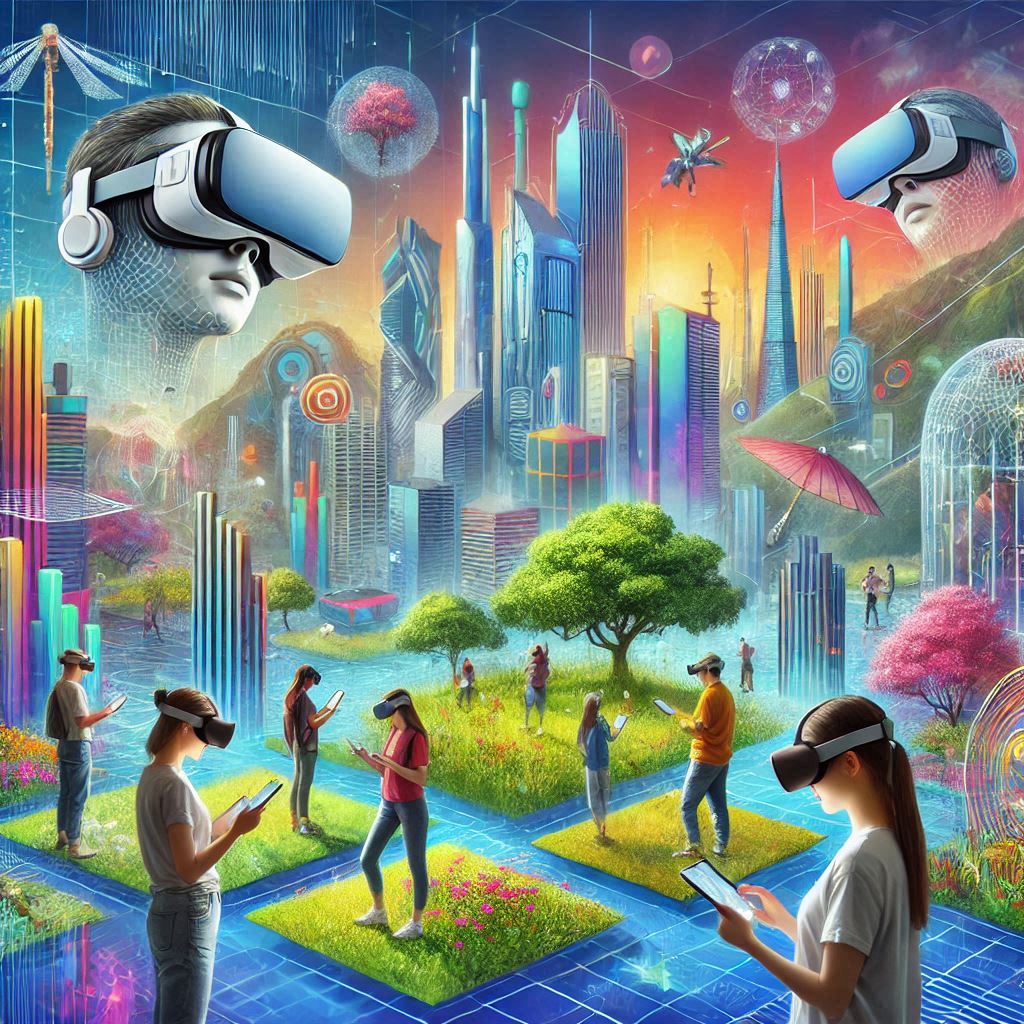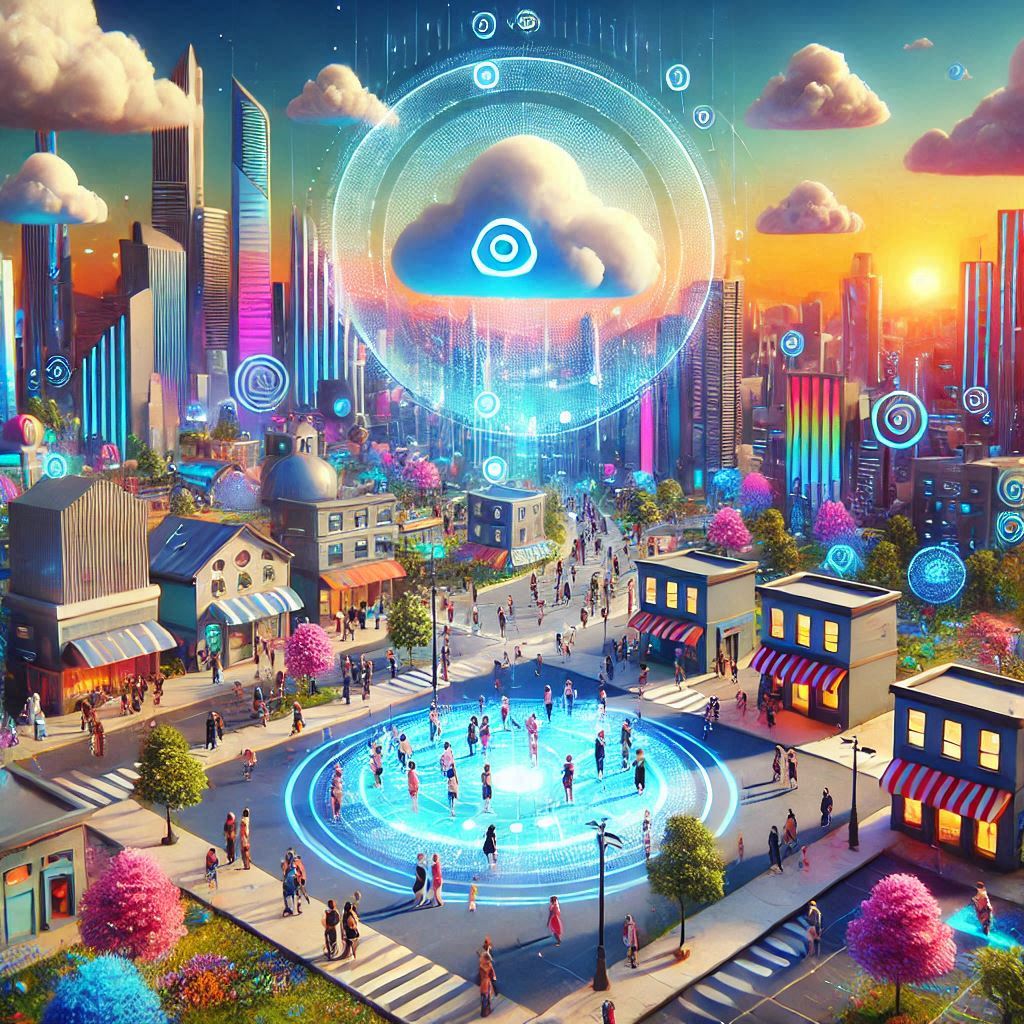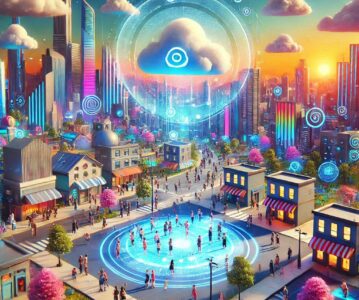The Metaverse is poised to revolutionize the way we interact, work, and play. The convergence of the physical and digital worlds promises new opportunities for entertainment, education, commerce, and social interactions. By 2025, the Metaverse will likely be a mainstream platform, and developers will play a central role in shaping its future. However, building for the Metaverse requires specialized skills that go beyond traditional software development. To stay relevant and thrive in this new era, developers must acquire new knowledge and expertise across several domains. This post explores the top skills every developer needs to master to build for the Metaverse in 2025.

Understanding Virtual and Augmented Reality (VR/AR)
One of the most fundamental elements of the Metaverse is Virtual Reality (VR) and Augmented Reality (AR). VR allows users to immerse themselves in entirely virtual environments, while AR overlays digital content in the real world. Developers need to understand the intricacies of both to create seamless experiences that feel natural and intuitive.
What to Expect in 2025:
- Immersive Experiences: By 2025, VR and AR will be integrated into many aspects of the Metaverse, from virtual offices to interactive gaming and social spaces. Developers will need to design experiences that engage users and provide meaningful interactions.
- Cross-Platform Support: The Metaverse is expected to be accessible across a wide range of devices, including VR headsets, AR glasses, smartphones, and desktops. Developers will need to ensure that their applications are compatible across multiple platforms.
Key Tools:
- Unity/Unreal Engine: These game engines are the backbone of VR/AR development. They provide the frameworks necessary to create interactive 3D worlds.
- ARKit (Apple) and ARCore (Google): These SDKs allow developers to integrate augmented reality features into their applications.
Skills Required:
- Experience in 3D modeling and spatial design
- Knowledge of VR/AR frameworks and best practices
- User experience (UX) design for immersive environments
Blockchain and Cryptography
Blockchain technology plays a central role in the Metaverse, particularly for enabling digital ownership, transactions, and the creation of virtual assets. Blockchain allows for secure, transparent, and decentralized management of assets like virtual goods, currency, and property. As digital assets become integral to the Metaverse, developers need to understand how to integrate blockchain into their applications.
What to Expect in 2025:
- Decentralized Economies: Blockchain will likely power the virtual economies of the Metaverse. Developers will need to work with cryptocurrencies, smart contracts, and tokenization to create decentralized applications (dApps) and virtual economies.
- Digital Ownership: Blockchain enables the concept of owning virtual goods, such as avatars, NFTs (non-fungible tokens), and in-game items. This will likely become a critical feature for businesses and users in the Metaverse.
Key Tools:
- Ethereum & Solidity: Ethereum is the leading blockchain platform for decentralized applications, and Solidity is the primary language for writing smart contracts.
- Polkadot and Chainlink: These platforms enable interoperability between different blockchains, which is essential for the Metaverse’s decentralized nature.
Skills Required:
- Blockchain development (smart contracts, tokenization, DeFi)
- Cryptography and secure data management
- Familiarity with various blockchain platforms and their ecosystems
3D Modeling and Animation
As the Metaverse is primarily a visual medium, developers must have a solid understanding of 3D modeling, animation, and rendering techniques. The Metaverse is built around creating lifelike, immersive environments, avatars, and objects that users can interact with. These assets need to be visually compelling and perform efficiently across various devices.
What to Expect in 2025:
- Realistic Environments: To make the Metaverse appealing and believable, the environments need to look realistic and detailed. Developers will use 3D modeling tools to create everything from buildings to natural landscapes.
- Interactive Avatars and Objects: Users will likely create avatars that represent them in the Metaverse, and these avatars need to be animated with lifelike movements. Interactive objects and items will also require seamless 3D rendering.
Key Tools:
- Blender: A powerful open-source 3D modeling and animation tool.
- Maya & 3ds Max: Industry-standard software for modeling and animation.
- WebGL and Three.js: Web-based libraries and tools to display 3D content in browsers.
Skills Required:
- Proficiency in 3D modeling, texturing, and rigging
- Animation techniques for smooth user interactions
- Understanding of performance optimization for real-time rendering
AI and Machine Learning
Artificial Intelligence (AI) and Machine Learning (ML) are becoming integral to the development of the Metaverse. From generating realistic NPC (non-playable character) behavior to analyzing user interactions and personalizing experiences, AI will help make the Metaverse more responsive and dynamic.
What to Expect in 2025:
- AI-Powered Interactions: NPCs will be driven by AI, allowing users to interact with virtual characters in a more meaningful and dynamic way. These NPCs will learn from user interactions, becoming smarter over time.
- Personalization: AI will help tailor user experiences based on behavior patterns, preferences, and past interactions. This will lead to highly personalized content, recommendations, and advertising.
- Natural Language Processing (NLP): NLP will allow users to communicate with AI-powered characters and systems using natural language, further blurring the lines between the physical and digital worlds.
Key Tools:
- TensorFlow & PyTorch: Popular frameworks for machine learning and AI development.
- OpenAI API & GPT-3: For NLP and conversational AI features in virtual spaces.
Skills Required:
- Knowledge of machine learning algorithms (supervised, unsupervised learning, etc.)
- Experience in natural language processing (NLP)
- Ability to integrate AI models into the Metaverse for dynamic interaction
Networking and Cloud Infrastructure
The Metaverse is a vast, interconnected network of virtual environments. To ensure smooth interactions and real-time experiences, developers need a deep understanding of networking, cloud infrastructure, and latency management. High-speed internet connections and powerful cloud servers will be required to host virtual environments and ensure low-latency interactions between users.
What to Expect in 2025:
- Edge Computing: As the Metaverse becomes more immersive, the demand for low-latency experiences will drive the adoption of edge computing. Developers will need to understand how to use edge nodes to improve performance and reduce latency.
- Distributed Systems: To support millions of users simultaneously, the Metaverse will need to rely on distributed systems that can scale dynamically. Developers will need to understand cloud architecture and how to build systems that handle large-scale data and traffic.
Key Tools:
- AWS & Azure Cloud Services: These platforms offer scalable cloud infrastructure that can support large-scale virtual environments.
- WebRTC: A powerful tool for enabling real-time communication in web applications.
Skills Required:
- Cloud computing expertise (AWS, Google Cloud, Azure)
- Networking concepts and real-time communication protocols
- Edge computing and distributed systems
UX/UI Design for the Metaverse
User experience (UX) and user interface (UI) design in the Metaverse will require a unique approach. Traditional 2D screen-based interactions are being replaced by immersive 3D environments, where users interact with objects, characters, and other users in a more tactile manner. Designing these spaces will demand creativity and a deep understanding of how users perceive and interact with virtual worlds.
What to Expect in 2025:
- 3D User Interfaces: Designers will move beyond 2D screens to create interfaces that work in 3D spaces. Think about immersive control panels, virtual dashboards, and tools that users can interact with in the virtual world.
- Spatial Interactions: UX/UI designers will need to consider how users interact with objects in space, using hand gestures, voice commands, and spatial awareness.
Key Tools:
- Figma & Sketch: These tools can assist with initial design concepts.
- Unity & Unreal Engine: For creating and testing interactive 3D environments.
Skills Required:
- Experience with immersive UX/UI principles
- Understanding of 3D spatial interactions
- Familiarity with prototyping tools and engines like Unity
Conclusion: A New Era of Development
As the Metaverse continues to evolve, the demand for skilled developers who understand VR/AR, blockchain, 3D modeling, AI, and cloud infrastructure will grow exponentially. By 2025, developers will need to master these skills to remain relevant in an increasingly immersive, decentralized, and AI-driven digital world. The Metaverse is set to revolutionize every industry, and the skills needed to build for this new frontier will be diverse and dynamic.
Developers who embrace these technologies and refine their expertise in these emerging fields will not only thrive but also help shape the future of digital interaction, entertainment, and commerce. As the Metaverse grows, so will the opportunities for those who are ready to innovate, collaborate, and build the next generation of digital worlds.
Summary Table: Key Skills for Building the Metaverse in 2025
| Skill Area | Description | Relevant Tools | Key Skills Required |
|---|---|---|---|
| VR/AR Development | Creating immersive virtual and augmented experiences | Unity, Unreal Engine, ARKit, ARCore | 3D modeling, UX design, spatial design |
| Blockchain | Enabling decentralized ownership and transactions | Ethereum, Polkadot, Solidity, Chainlink | Blockchain development, smart contracts, cryptography |
| 3D Modeling & Animation | Designing lifelike 3D assets, environments, and avatars | Blender, Maya, WebGL, Three.js | 3D modeling, animation, performance optimization |
| AI & Machine Learning | Personalizing experiences, powering NPCs, and improving interactivity | TensorFlow, PyTorch, OpenAI GPT-3 | ML algorithms, NLP, AI integration |
| Networking & Cloud Infrastructure | Managing real-time communication and ensuring scalability | AWS, Google Cloud, WebRTC, Azure | Cloud architecture, networking, edge computing |
| UX/UI Design | Designing interfaces for 3D and immersive environments | Figma, Sketch, Unity | UX/UI principles for 3D spaces, spatial interaction |
In conclusion, mastering these key areas will be essential for any developer aiming to build for the Metaverse in 2025. With the right set of skills, developers will have the tools to create groundbreaking, immersive experiences that define the next era of digital interaction.
Discover more from lounge coder
Subscribe to get the latest posts sent to your email.


